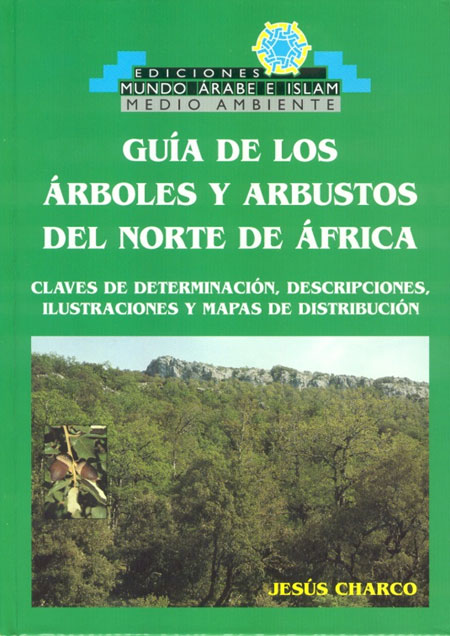 In the year 2000, after ten years of intense research in the field, in herbaria and in libraries, the Guía de los árboles y arbustos del Norte de África, by Jesús Charco, was completed. It was published in 2001 by the Cultural and Scientific Relations General Management (Dirección General de Relaciones Culturales y Científicas), of the Spanish Cooperation Agency for International Development (AECID). The project focused on those species that were the most relevant to the conservation of biodiversity and the fight against desertification in North Africa: the native trees and shrubs that enrich the landscape, create and protect the soil and humidity, and serve as shelter for the local fauna.
In the year 2000, after ten years of intense research in the field, in herbaria and in libraries, the Guía de los árboles y arbustos del Norte de África, by Jesús Charco, was completed. It was published in 2001 by the Cultural and Scientific Relations General Management (Dirección General de Relaciones Culturales y Científicas), of the Spanish Cooperation Agency for International Development (AECID). The project focused on those species that were the most relevant to the conservation of biodiversity and the fight against desertification in North Africa: the native trees and shrubs that enrich the landscape, create and protect the soil and humidity, and serve as shelter for the local fauna.
By the end of the XX century, the information available for this project was limited, because the main botanical references for the region (such as Catalogue des plantes du Maroc, Nouvelle flore de l’Algérie…, Flore de la Tunisie, Flora of Libya, Flore de Mauritanie, and Flore et végétation du Sahara) offered scant information and a taxonomy that was often obsolete. Yet, they were the basis for the project. The extraordinary work by René Maire, Flore de l’Afrique du Nord, became an excellent ally, but unfortunately, since the work is incomplete, there were times where we could not resort to it. However, with the data compiled in these great publications, from other publications, review of herbaria and, especially, with many field trips, our work was gradually completed. The goal was to create a modern, attractive book, with detailed descriptions, maps, and colour photographs of all species.
The research resulted in a book that treats 580 species, described over 671 pages, and is a synthesis, with the knowledge of that time, of all the trees, shrubs and woody lianas that are native to North Africa, intended as a field guide. It included dichotomous keys, updated taxonomy, detailed morphological descriptions of the species, information about flowering and fruiting periods, distribution maps for all species, and a careful selection of 700 photographs, mostly captured by the author himself in the field; which means that almost all species were observed, measured and photographed in the wild. Several species had never been photographed before, which made some of the images contained in the book especially valuable. The project brought technicians, managers and students closer to the world of specialists, giving it an attractive added value. For all these reasons, many Spanish universities had it listed as reference material in their study plans. The book had considerable success and sold out in just over a year.

